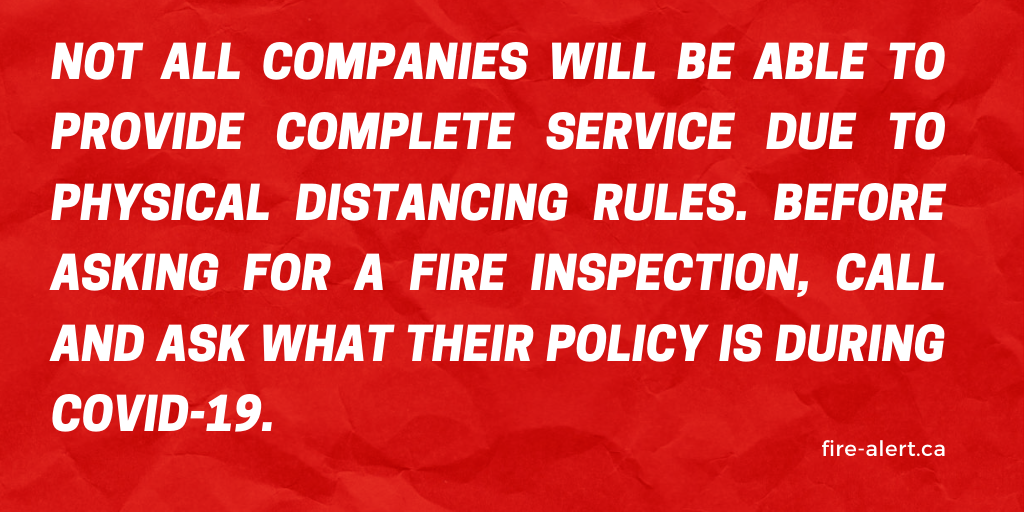How to Perform a Fire Inspection During COVID-19
Whether you’re at home or in a workplace, you can’t avoid COVID-19. Most of our lives have now revolved around what practices are best to prevent and reduce the spread of the virus. You may not consider it, but even a routine fire inspection needs to be tweaked before going through your home or office environment.
Here are some simple and effective ways a fire inspection can still be done while actively preventing the spread of coronavirus.
1. Assign One Person to Check Fire Alarms
If you’re in a multi-story building or office environment, make sure there’s just one person who is performing the fire inspection.
Not every employee is trained to check all of the fire equipment, so this might be a job for a professional fire inspection service.
Your workplace fire marshal can be a good person to turn to for routine inspections of entrances, exits, fire extinguishers, and other safety tools. In this case, they’ll have to be careful during inspection and sanitize surfaces as they go.
Here’s what we outline on our website as a safe practice to check your fire extinguisher:
Fire extinguishers should be maintained at regular intervals (at least once a year), or when specifically indicated by an inspection. A fire extinguisher inspection is intended to give maximum assurance that an extinguisher will operate effectively and safely. It includes a detailed examination and any necessary repairs, recharging or replacement. It will normally reveal the need for pressure testing (hydrostatic testing) of an extinguisher to ensure the cylinder is safe to use.
2. Sanitize Entrances and Exits Frequently
If you’re at work during COVID-19, you’ve probably already gotten the sanitization drill. Wiping down surfaces is vital to making sure everything is safe to use in the workplace.
Make sure your office has cleaning supplies and it is accessible to everyone. It’s best to go around at least 3 times a day to wipe down commonly used surfaces. This is important in the event of an emergency where people will need to evacuate. That way, evacuation can be done as safely as possible with a lesser chance of contamination.
The National Fire Protection Association also makes this point about making sure entrances are not only sanitize, but accessible:
“Many buildings have adjusted their entries and lobbies to now require such features as staggered entry, mask deployments and temperature checks. How have these important and pragmatic changes taken people with disabilities into account? The following questions should be considered: Are entries free and clear of obstruction? Is the entry accessible for those using wheelchairs or other mobility devices?”
3. Call in the Experts
Calling in a professional fire inspector to perform a routine inspection is often the best route to take. This is especially true if you’re in an office environment.

However, not all companies will be able to provide complete service due to physical distancing rules. Before asking for a fire inspection, call and ask what their policy is during COVID-19.
The Ontario Fire Marshal outlines certain protocols that need to be taken into place during the pandemic:
“Fire Departments should consider on a case by case basis and per local municipal policies during COVID-19 restrictions: To limit fire inspection activities that require entry into buildings to fire safety matters that involve serious risk to life safety, or, fire safety matters that the Fire Chief or their delegate have assessed and deemed to be necessary. Fire inspection related entry into buildings should be undertaken in compliance with any COVID-19 safety protocols adopted by municipalities and in compliance with any additional protocols adopted in buildings where entry is required.”
At Fire Alert, we offer services for equipping your work or home with the right fire prevention equipment. Check out more here or contact us for more info.